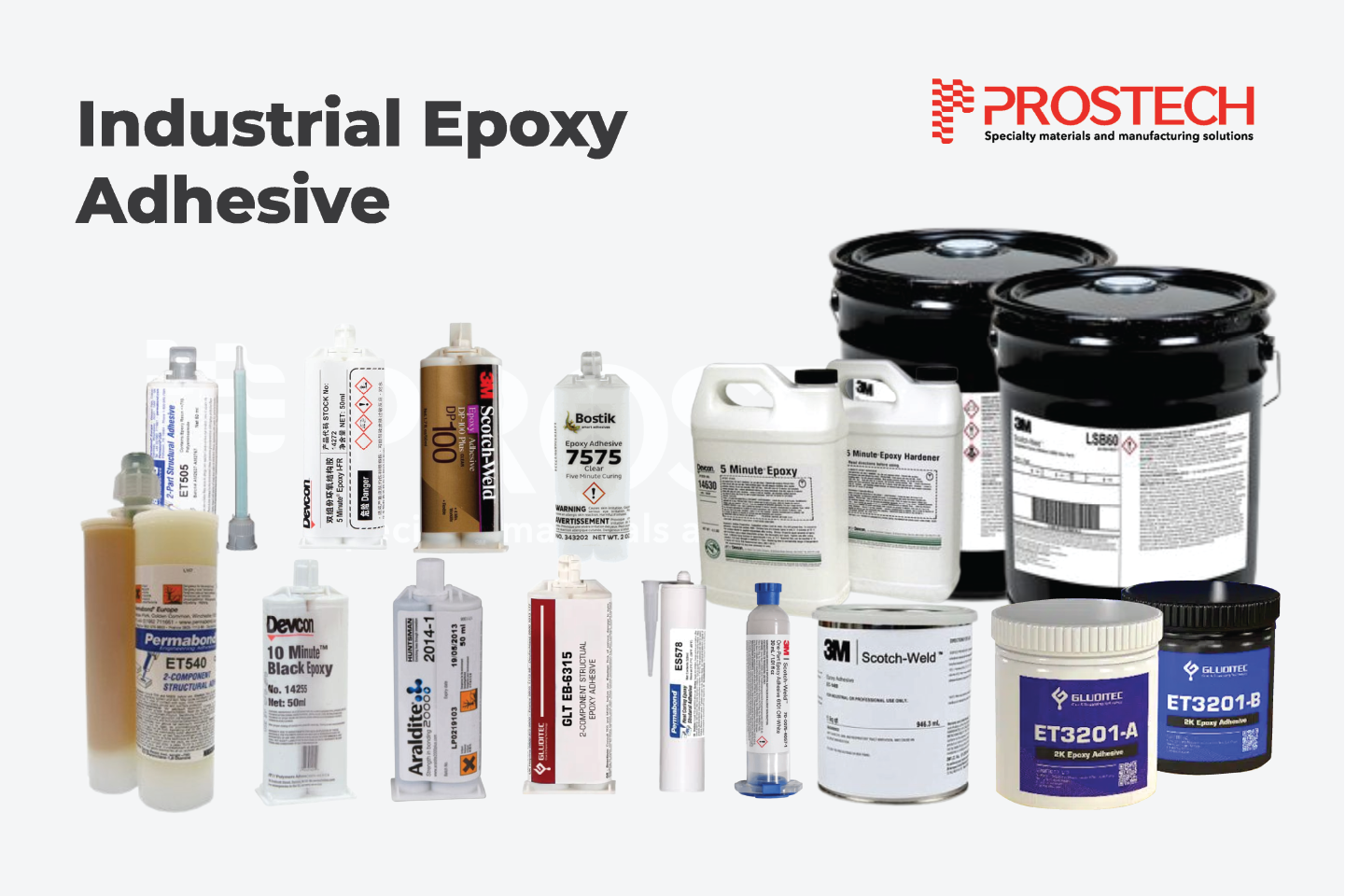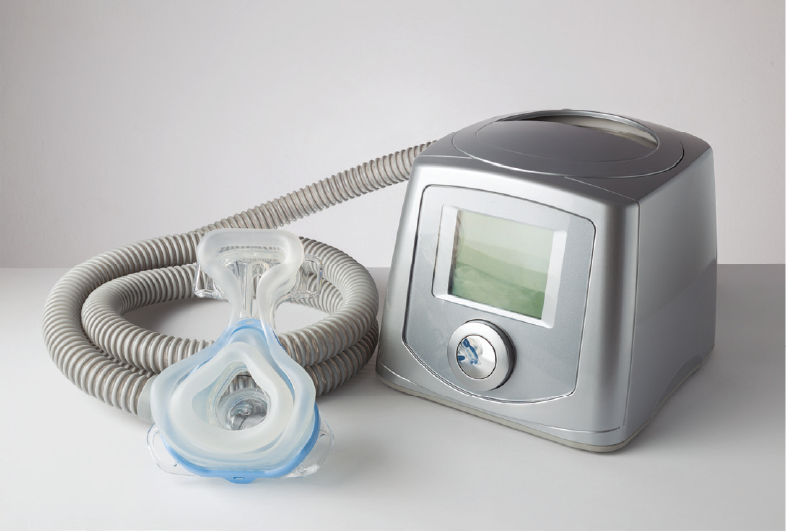- Why Waterproofing Type-C Connectors is Crucial
- How to Waterproof Type-C Connectors
- Benefits of Potting for Type-C Connectors
- Common Issues Faced by Waterproof Adhesives for Type-C Connections
- How To avoid issues when using waterproof adhesives for Type-C connections
- What Are the Properties of Waterproof Adhesives for Type-C?
Recently, the demand for waterproof performance has increased for applications such as high-end smartphones. To cater to these trending requirements, many manufacturers have developed USB Type-C waterproof receptacles, and potting is generally used. However, there are several concerns about waterproof adhesives during reflow processes that expose the connector to high temperatures. This blog will explore the critical role of adhesives in waterproofing Type-C connectors, common issues faced by waterproof adhesives, and how we can address those challenges.
Why Waterproofing Type-C Connectors is Crucial
The waterproof type-C connectors are well-suited for a wide range of portable and consumer applications that commonly encounter fluids and drop impacts. This includes digital cameras, Ebooks, GPSX, IoT, laptops, MP3 players, medical devices, portable storage devices, smart phones, tablets, wearables, vehicle infotainment systems and more.
Exposure to moisture and water can lead to performance degradation and shorter lifespans. Poor waterproofing can result in electrical failures, corrosion, and connectivity issues, impacting user experience. Electronic applications demand robust waterproofing to ensure reliable performance in challenging conditions.
How to Waterproof Type-C Connectors
The waterproof connector includes a front sealing gasket that prevents water penetration into the shell, while potting prevents water intrusion into the connector interior.
- Front Sealing Gasket: This gasket is a critical component that acts as a barrier against water penetration into the connector’s shell. It is usually made from high-quality elastomeric materials, such as silicone or rubber, which provide excellent sealing properties.
- Potting Compound: This is a protective resin that fills the interior of the connector, preventing water intrusion and protecting internal components from environmental factors.
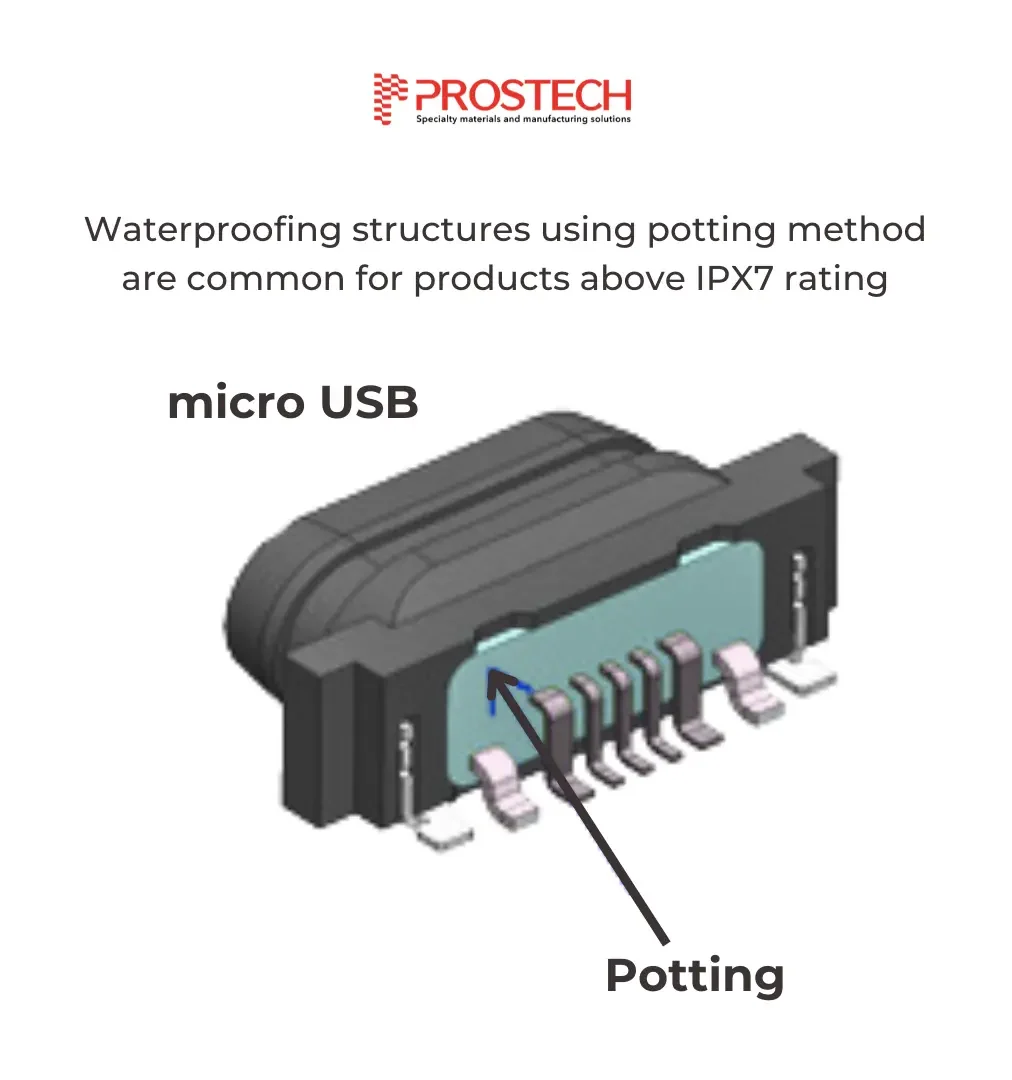
Benefits of Potting for Type-C Connectors
Beside waterproofing, potting offers significant advantages for Type-C connectors:
- Enhanced protection against moisture and environmental factors.
- Improved mechanical stability and shock resistance.
- Prevention of corrosion and electrical failures.
- Versatility in different applications and environments.
See our potting solution here.
Common Issues Faced by Waterproof Adhesives for Type-C Connections
After assembling the connector, waterproof adhesive is applied to fill the interior space of the connector. This involves potting the electronic components (like circuit boards or contacts) to protect them from moisture and environmental contaminants. However, during the use of waterproof adhesives for Type-C connections, several common issues may arise:
- Cracking of the Adhesive Layer: Due to high temperatures or pressure, such as vibrations, impacts, etc., the adhesive layer of the connection may crack. This reduces the waterproofing capability of the adhesive layer.
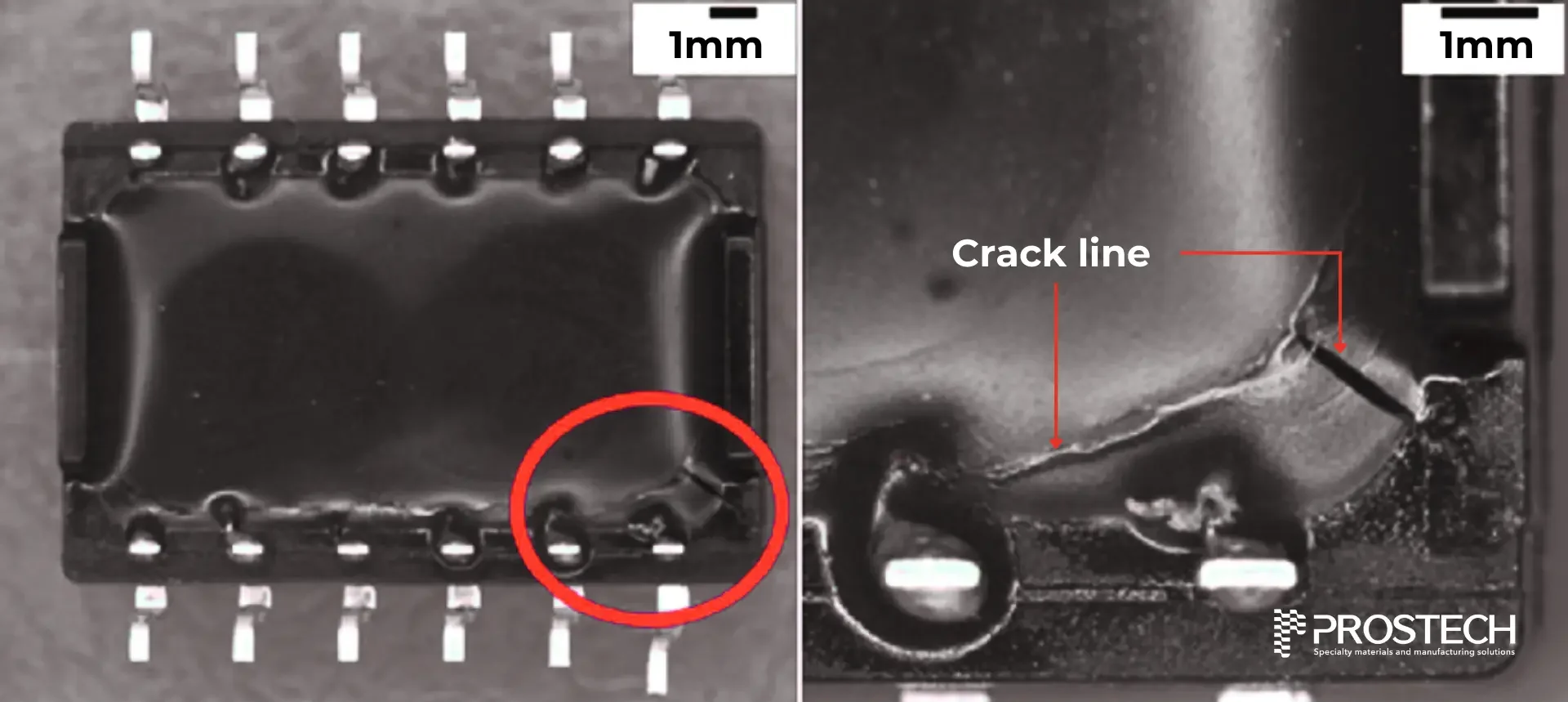
- Peeling of the Adhesive Layer: The adhesive layer may peel off due to the effects of time, excessive use, or damage to the connection. This diminishes the waterproof protection of the adhesive layer.
- Chemical Aging of the Adhesive Layer: Prolonged use of the adhesive can lead to chemical aging, resulting in issues such as hardening or deformation of the adhesive layer. This also reduces waterproof effectiveness.
- Improper Application: The application of the adhesive requires high technical skill. If not applied correctly, the adhesive layer may not make proper contact with the connection surface, leading to reduced waterproof effectiveness.
- Improper Cleaning: Before using the adhesive, it is necessary to clean the connection surface to ensure the adhesive can bond effectively. Otherwise, dust or grease may affect the adhesive’s bonding strength and waterproof capability.
How To avoid issues when using waterproof adhesives for Type-C connections
To avoid the above issues when using waterproof adhesives for Type-C connections, the following points should be noted:
- Choose high-quality waterproof adhesives to ensure waterproofing and bonding strength.
- Follow the proper application process to ensure uniform adhesive layer thickness.
- Regularly check the condition of the adhesive layer and replace it if any signs of damage are detected.
- Avoid strong impacts or mechanical stress on the adhesive layer after application.
- Ensure the connection surface is clean and dry before using the adhesive.
What Are the Properties of Waterproof Adhesives for Type-C?
If opting for a one-component epoxy adhesive, most require good flexibility and adhesion to adapt to the characteristics of Type-C connections. Therefore, the strength requirements for the adhesive layer are very high. The adhesive must withstand temperature and humidity changes to avoid cracking or poor adhesion between layers.
Waterproof Type-C adhesives are typically used with adhesives that have high bonding strength and waterproof capabilities. Some recommended adhesives can meet the IP68 standard, providing protection for connections in harsh environmental conditions.

So what characteristics should a suitable epoxy adhesive have? Prostech summarized several points that can be referenced:
- The adhesive must have appropriate fluidity and viscosity to ensure it can fill all gaps and cracks. For high-viscosity adhesives, a viscosity of 4000-7000 CPS is recommended; for special-purpose adhesives, a viscosity of 10000-20000 CPS or higher should be chosen.
- The adhesive requires high filling capacity, low shrinkage, and good fluidity to fill all gaps within a short time.
- The adhesive should not produce bubbles and must have very low foam formation.
- The adhesive requires good adhesion to the bonded materials.
- The adhesive needs to have good elasticity to absorb and release internal forces due to the expansion and contraction of the products.
- The adhesive should have high flexibility to meet the structural requirements of products with different stiffness levels.
- The adhesive requires a fast curing time.
- The adhesive needs to have excellent leak resistance while still maintaining its fluidity.
Read more: Potting Compounds – How to choose the right one?
Prostech offers advanced epoxy potting solutions that meet these stringent requirements. Our innovative formulations are designed to provide superior adhesion, flexibility, and leak resistance, making them ideal for various applications.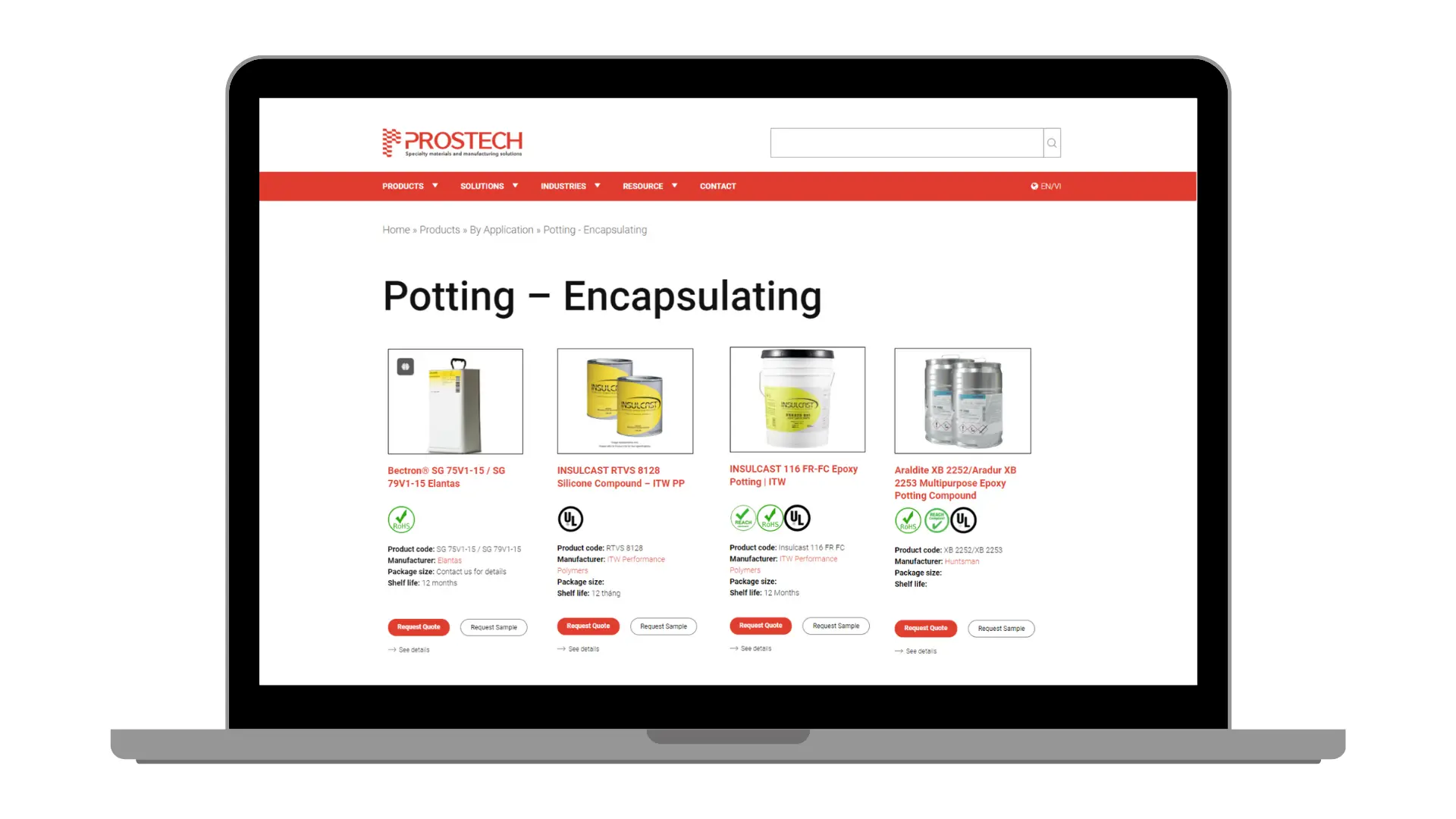

The choice of the appropriate compounds for potting depends on the specific requirements of the application and environmental conditions. Each type of material offers its own advantages and is suited to different demands during the manufacturing and usage processes. With many years of experience in the industrial material, Prostech is ready to assist customers in selecting the right potting compound and providing integrated solutions for production lines to optimize manufacturing efficiency. Contact us for free consultation!





